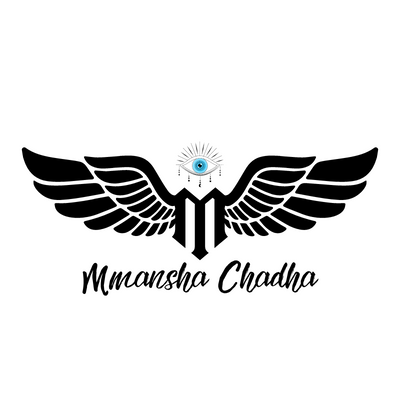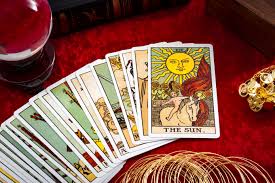Tarot is one of the most well-known divination rehearses, and however soothsayers have been drawing the figurative cards for quite a long time, delineated decks are presently springing up everywhere. The characteristic aestheticism of this antiquated workmanship has revived interest in tarot, and subsequent to seeing so many tarot readings over on TikTok, maybe you're prepared to begin your own training. All things considered, tarot nail treatments are even a thing.
Regardless of its omnipresence, however, the workmanship can in any case appear to be subtle and confounding. What precisely is a tarot? What do the cards mean and how are they utilized? Try not to worry: The essentials are straightforward. This is the very thing that each fledgling ought to be aware of in the historical backdrop of tarot, as well as tips and deceives for launching your special practice.
Where does tarot come from?
Shockingly, it is a generally present-day creation. However tarot decks date back to the 1400s, pictorial cards were initially utilised for games instead of expectation. Cartomancy, or fortune-telling using playing a card game, really wasn't created until 1785, when French medium Jean-Baptiste Alliette — known by his nom de plume, the reversal of his last name — made thorough connections between showed cards, soothsaying, and old Egyptian legend.
Over the course of the following hundred years, spiritualists and savants kept on growing the job of tarot. In the last part of the 1890s, a few London-based mediums shaped the Airtight Request of the Brilliant Daybreak, one of the gatherings liable for the cutting-edge mystical recovery. Two of the gathering's pioneers, a couple MacGregor and Moina Maters, composed a manual that point by point tarot's emblematic power, entitled Book T.
In 1909, Arthur Edward Waite and Pamela Colman Smith planned and distributed a tarot deck approximately founded on the lessons of the Airtight Request of the Brilliant First light. This immortal deck is usually known as the Rider-Waite deck and is as yet the most famous tarot variation for both novice and expert card perusers. In 1943, soothsayer Aleister Crowley (oneself announced foe of Arthur Edward Waite) and Woman Frieda Harris distributed their own translation of the Airtight Request of the Brilliant First light's tarot. Their Thoth deck, named after the Egyptian lord of letter sets, integrates explicit visionary imagery into each card, connecting the divination practice to the universe.
What's the distinction between the Major Arcana and the Minor Arcana cards?
We should discuss the design of the deck and the implications of its cards. Any mysterious practice — tarot, crystal gazing, or spell work — depends on the Airtight adage "as above, so underneath." at the end of the day, the universe of the universe is reflected in the microcosm of individual experience. Likewise, the whole universe exists inside a tarot deck, with each card addressing an individual, spot, or occasion. These images are portrayed in both the Major Arcana cards, which address more prominent mysteries, and the Minor Arcana cards, which address lesser insider facts.
The Major Arcana cards address fantastic, momentous impacts. They intersperse our excursions and each stands alone as a strong message, addressing extraordinary movements that characterize the starting points or finishes of cycles. These powerful cards show up during significant changes, flagging particular snapshots of change. The cards are numbered to address stations inside our more noteworthy excursion through life; their sequential request uncovers the progression of time.
The Minor Arcana cards, then again, reflect ordinary matters. These cards grandstand conventional individuals taking part in commonplace exercises, like moving, drinking, dozing, or quarrelling. They recommend an activity that is set off by human ways of behaving and show up during delicate changes that might be transitory or have just a minor impact.
What number of tarot cards are there?
The Minor Arcana cards are separated into four suits, each containing ten numbered cards and four court cards. In the Minor Arcana, the card's number uncovers the phase of an occasion: The ace card addresses the start, while the 10 represents the end. Essentially, the movement of the court cards exhibits how we might interpret conditions on a singular level, addressing either character types or genuine individuals. The Page (or Princess, in certain decks), Knight, Sovereign, and Ruler decipher conditions with expanding levels of understanding and astuteness.
The suits (Wands, Pentacles, Swords, and Cups) compare to their own one-of-a-kind everyday issues and visionary components. Wands represent enthusiasm and motivation (corresponding with the fire component), Pentacles address cash and actual fundamental factors (relating to the earth component), Blades portray scholarly interests (relating to the air component), and Cups delineate close-to-home matters (relating to the water component). These suits uncover which effective reaches are being initiated, offering direction on the most proficient method to best deal with any conditions within reach.
How might I begin reading the cards?
Together, the Major and Minor Arcana cards make an exhaustive pictorial language. It is vital to recollect that every one of the responses we look for exists intrinsically inside the deck, with each card delineating an individual, situation, or possible result. Since there is no mystery astounds or secret plans with tarot, the capacity to observe importance exists in your own story translation.
Rearrange (or "clear") the deck prior to any reading. This purposeful signal ought to turn into a reflection. Feel the rawness of the cards in your grasp, imagining your inquiry. On the off chance that you're perusing someone else, utilize this intelligent second to get to the foundation of their circumstance and assist you with forming explicit questions for them. Take as long as you really want. Preparing for the battle is a basic initial phase in perusing tarot cards, as it opens the pathway between profound aspects. At the point when you're prepared, cut the cards into three and reorder the heap, face down. On your #1 fabric (be valuable with your tarot deck), get ready to pull cards for your tarot "spread."
What is the different tarot card spreads?
The "three-card spread" is one of the most basic and compelling tarot spreads. You can change the classifications to oblige what is happening (past, present, future; yourself, the other individual, the relationship; valuable open doors, challenges, results; mind, body, soul). The cards and their related positions will easily uncover bonds and elements. Yet, prior to perusing the clear clarification of each card, pause for a minute to make your own story in light of perception. How do the cards you drew cause you to feel? What are the varieties and images? Assuming that there are characters, would they say they are looking towards or away from one another? Do the delineations appear to be strong or disconnected?
Obviously, there are numerous tarot card spreads past the three-card pull. Proficient tarot card perusers frequently choose the "Celtic cross spread," which utilizes 10 cards, and as the name proposes, looks like the state of a Celtic cross. The 10-card spread permits you to take a gander at the past, present, and future, yet the difficulties, outside impacts, and even results.
For fledglings (however truly, even prepared tarot perusers to do this), a one-card-a-day pull will do the trick at first to get you used to the training. This technique includes picking a period of day (typically in the first part of the day) and essentially asking the cards, "What is it that I really want to know today?" or "How might I centre my energy today?" This strategy is effective, simple to stay aware of, and furthermore an extraordinary method for learning the cards.
However, each card has exemplary affiliations; the most impressive asset accessible is your instinct. Note your quick profound response: Your senses will illuminate your review and fortify your pictorial memory. At last, you'll foster your own frameworks and examples, and individual cards will convey implications intended for you. Maybe Satan's card will come to address an ex-darling, while the Two of Wands will represent a new position. Your particular dictionary will illuminate your readings, permitting you to make explicit stories that can be applied to any situation or circumstance.
If you're willing to start your employment as a tarot card peruser, the complete tarot course - from minor to the major aspects in a Tarot reading is as of now being introduced by Mmansha Chadha. She is a well-known Vedic Astrologer and the best Tarot Card coach in Gurgaon. Pursue our tarot seminar on the web and learn about the possibility of the tarot, the differentiation among major and minor Arcana, and all pieces of the vehicle grasping technique. Check out our site for the availability of batches on Tarot Card learning courses.

